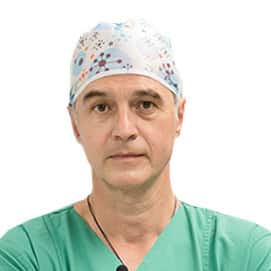Approximately 15% patients who have undergone abdominal surgery (laparotomy) in the late postoperative period (often many years later) develop an incisional hernia, i.e., divergence of the postoperative suture in one or more places.
In this case, a more or less large defect of the anterior abdominal wall (defect = hernial orifice) occurs, through which, as with an inguinal hernia, the peritoneum (hernial sac) with the contents of the abdominal cavity (most often these are intestinal loops) goes out into the subcutaneous tissue, protrudes .
Causes
The causes of this defect are not fully understood. What matters are: the type of primary incision (longitudinal or transverse), the technique of the primary suture of the anterior abdominal wall (continuous or nodal, the distance between the stitches, the capture of all layers simultaneously or separately), the suture material (absorbable or non-absorbable), as well as general factors such as like smoking or weak connective tissue (called collagen disease).
More than 50,000 incisional hernia operations are performed annually in Germany, so this operation is also of great clinical and economic importance, since it can be technically complex and, due to the need to use a large mesh, quite expensive.
Symptoms
Symptoms are protrusion of the abdominal wall, a feeling of heaviness, pulling pains, pain during physical exertion. And with this type of hernia, the contents of the hernial sac can be infringed (severe acute pain), as a result of which there is a threat to life and an urgent operation is required. In addition to clinical examination and ultrasound (sonography), diagnostic measures include computed tomography, primarily for accurate measurement of the anterior abdominal wall defect.
Treatment
Absolute indications for surgery are infringement, pain and an increase in the size of the hernia. The smaller the hernia, the easier and with fewer complications is the operation.
For any hernia with a hernia orifice larger than 2-3 cm, the principle of closing the hernial sac with a synthetic mesh is currently applied, since when using only a straight suture, there is a risk (more than 30%) of a repeated hernia (relapse). With mesh implantation, the recurrence rate can be reduced to 5%.
There are open and laparoscopic mesh implantation procedures. It is important to reinforce with a mesh not only the entire postoperative suture (augmentation), but the mesh should cover all possible hernia gates by at least 3-5 cm. This is the only way to prevent the occurrence of a repeated hernia (relapse). The complexity of the operation depends on the size of the suture and the size of the hernia.
The mesh can be implanted openly or minimally invasively. The disadvantage of an open operation is that it requires a large incision with a corresponding traumatization of the abdominal wall and the appearance of an extensive wound surface. This increases the risk of poor wound healing (wound infection) and accumulation of fluid in the wound (seroma), which is also fraught with the risk of infection. At the same time, the treatment process can be significantly delayed and the success of the operation is called into question.
The advantage of laparoscopy is that a large incision of the abdominal wall can be avoided, (usually only three maximum two centimeter incisions are required), while postoperative pain is less pronounced, hospital stay is shortened, hematomas (internal hemorrhages) occur less often, and, of course, that It has been scientifically proven that wound infections are less likely to occur.
The disadvantages of the method include the fact that it is often necessary to separate extensive adhesions of the abdominal cavity, with a certain risk of damage to the intestinal wall. In addition: since with this method it is impossible to avoid direct contact between the intestine and the mesh, it is necessary to implant special meshes that exclude the possible negative consequences of such contact. An ideal grid in this sense does not yet exist.
The following two disadvantages of the laparoscopic technique are:
- The grid must be fixed. In contrast to inguinal hernia surgery, fixation of the mesh plays a more significant role in creating a stable reconstruction in this case. The mesh can be fixed with a seam or with special clips and screws. Suture fixation has proved to be the most effective, but it is technically complex and time-consuming. In addition, patients in the first postoperative days may experience severe pain at the fixation points.
- Most often, during the reconstruction of the midline, it is impossible to bring the rectus abdominis muscles closer to each other. This can lead to dysfunction of the muscles of the anterior abdominal wall.
Summarizing, it can be argued that from a modern point of view, given the above problems, it is impossible to give full preference to one or another technique. Laparoscopy is opposed by the unresolved issues of mesh fixation and the impossibility of reconstructing the midline. The significantly rarer development of wound infection speaks for laparoscopy, which can nullify the success of the operation.
The decision in favor of laparoscopy or open surgery is made by us in dialogue with the patient, taking into account the size and location of the anterior abdominal wall defect, the severity of subcutaneous fat and risk factors that affect the development of infection (the so-called "tailored approach" t i.e. a one-time study focused on solving a specific problem and on a specific patient).
Head of the Clinic for General, Visceral and Minimally Invasive Surgery
Head of the Clinic for General, Visceral, Thoracic and Endocrine Surgery
Video
Request appointment
Useful links
Photo gallery










